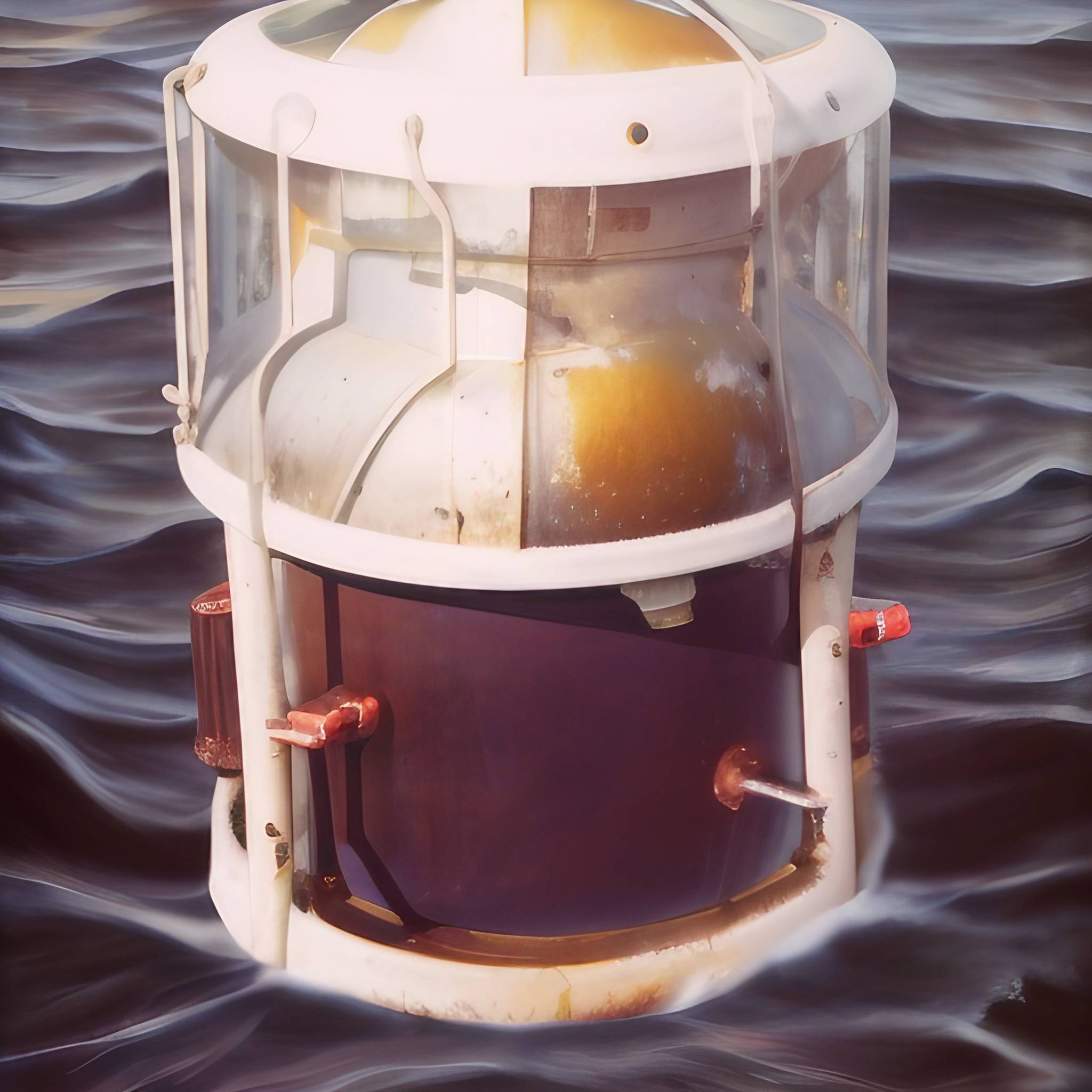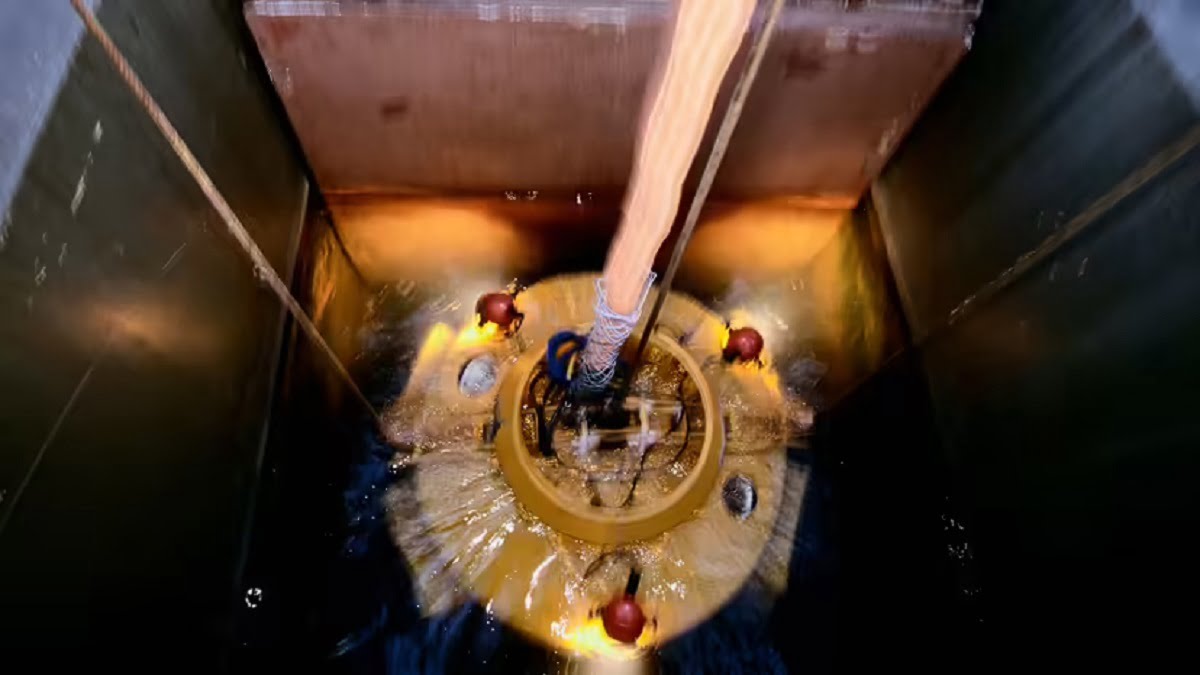On February 6, 1983, the world of offshore diving was shaken by one of the deadliest accidents in its history – the Byford Dolphin saturation diving accident. This event left an indelible mark on the industry, shaping safety protocols and raising questions about the risks divers face in extreme conditions. The tragedy unfolded aboard the Byford Dolphin, a semi-submersible drilling rig operating in the North Sea. In this article, we’ll explore the details of the accident, its impact, and the lessons learned.
Imagine being 165 meters underwater, surrounded by crushing pressure and darkness. That’s the reality saturation divers face every day. But for the crew of the Byford Dolphin, February 6, 1983, was a day that changed everything. What started as a routine decompression process turned into a catastrophic event, leaving five divers dead and raising serious concerns about the safety of saturation diving.
This article aims to shed light on the Byford Dolphin saturation diving accident, examining its causes, consequences, and the measures taken to prevent similar incidents in the future. By understanding the risks and challenges faced by saturation divers, we can appreciate the sacrifices made by these brave individuals and the advancements in safety that followed.
Read also:Ohio Small Dog Rescue A Heartwarming Haven For Tiny Pups
Understanding Saturation Diving
Before we dive into the details of the Byford Dolphin accident, let’s take a moment to understand what saturation diving is. Saturation diving is a technique used to allow divers to remain at great depths for extended periods without having to undergo frequent decompression stops. This method revolutionized deep-sea exploration and offshore drilling, enabling divers to work efficiently in extreme environments.
In saturation diving, divers live in a pressurized environment that matches the pressure of the water they’re working in. This allows them to work for several hours a day without the need for decompression between dives. However, this technique comes with significant risks, as the body is subjected to pressures that can lead to severe health issues if not managed properly.
Why Saturation Diving Is Dangerous
Saturation diving is not for the faint-hearted. The risks involved are numerous, ranging from decompression sickness to equipment failure. Here are some of the dangers divers face:
- Decompression Sickness (The Bends): Occurs when a diver ascends too quickly, causing nitrogen bubbles to form in the bloodstream.
- Barotrauma: Damage to body tissues caused by pressure differences between air spaces in the body and the surrounding water pressure.
- Equipment Failure: Any malfunction in the diving equipment can be fatal at extreme depths.
- Psychological Stress: The isolation and high-pressure environment can take a toll on a diver’s mental health.
These risks highlight the importance of rigorous safety protocols and continuous advancements in technology to protect divers.
The Byford Dolphin Incident
The Byford Dolphin accident occurred during a routine decompression process. The rig was conducting maintenance operations at a depth of 165 meters when tragedy struck. A transfer capsule, used to move divers between the diving bell and the saturation chamber, experienced a catastrophic pressure failure, resulting in the deaths of five divers.
Investigations revealed that the accident was caused by a combination of human error and equipment failure. The pressure relief valve on the transfer capsule malfunctioned, leading to a rapid pressure drop that the divers could not survive. This incident served as a wake-up call for the offshore diving industry, prompting a reevaluation of safety standards and equipment reliability.
Read also:Griselda Blancos Sons Names The Untold Story Behind The Cocaine Godmothers Family
Key Details of the Accident
Here’s a breakdown of the critical moments leading up to and during the Byford Dolphin incident:
- Date: February 6, 1983
- Location: North Sea
- Depth: 165 meters
- Cause: Pressure relief valve malfunction
- Victims: Five divers
The tragedy left a lasting impact on the families of the victims and the diving community as a whole. It underscored the need for improved safety measures and a deeper understanding of the risks associated with saturation diving.
Causes and Contributing Factors
While the immediate cause of the Byford Dolphin accident was the failure of the pressure relief valve, several contributing factors played a role in the tragedy:
- Human Error: Improper maintenance and inspection procedures may have contributed to the valve malfunction.
- Design Flaws: The transfer capsule’s design was questioned, with some experts suggesting it was not robust enough for such extreme conditions.
- Lack of Redundancy: The absence of backup systems to mitigate equipment failures highlighted a critical oversight in safety planning.
These factors emphasize the importance of thorough risk assessment and the implementation of redundant safety systems to prevent future accidents.
Lessons Learned from the Byford Dolphin Accident
The Byford Dolphin tragedy served as a catalyst for change in the saturation diving industry. Lessons learned from the incident include:
- Improved Safety Protocols: Stricter maintenance and inspection procedures were implemented to ensure equipment reliability.
- Advanced Technology: Innovations in diving equipment and life-support systems have significantly reduced the risk of similar accidents.
- Enhanced Training: Divers now undergo more rigorous training to prepare them for emergencies and equipment malfunctions.
These measures have contributed to a safer working environment for saturation divers, although the risks remain significant.
Impact on the Saturation Diving Industry
The Byford Dolphin accident had a profound impact on the saturation diving industry. It led to the development of new safety standards and regulations, ensuring that similar incidents would be less likely to occur in the future. The industry’s response to the tragedy demonstrates its commitment to protecting the lives of its workers.
One of the most significant changes was the introduction of the North Sea Offshore Installations (Safety Case) Regulations 1992, which required operators to provide detailed safety cases for their operations. This regulatory framework has been adopted by other regions, promoting global standards for offshore safety.
Regulatory Changes Post-Byford Dolphin
The regulatory landscape evolved significantly following the Byford Dolphin incident. Key changes include:
- Safety Case Regime: Operators must demonstrate the safety of their operations through comprehensive safety cases.
- Regular Inspections: Equipment is subjected to frequent inspections and maintenance to ensure its reliability.
- Emergency Preparedness: Operators are required to have robust emergency response plans in place.
These regulations have played a crucial role in enhancing the safety of saturation diving operations worldwide.
Technological Advancements in Saturation Diving
Advancements in technology have transformed the field of saturation diving since the Byford Dolphin accident. Innovations in diving equipment, life-support systems, and communication technologies have significantly improved the safety and efficiency of deep-sea operations.
Modern saturation diving systems are equipped with redundant safety features, ensuring that divers are protected even in the event of equipment failure. Additionally, advancements in materials science have led to the development of stronger and more reliable components for diving equipment.
Future of Saturation Diving
The future of saturation diving looks promising, with continued advancements in technology and safety protocols. Emerging technologies such as robotic systems and autonomous underwater vehicles (AUVs) are expected to reduce the need for human divers in hazardous environments. However, the role of saturation divers remains vital for complex tasks that require human expertise and decision-making.
As the industry evolves, it is essential to maintain a balance between technological innovation and human involvement, ensuring that safety remains a top priority.
Human Stories: The Impact on Families and the Community
Behind every statistic and technical detail lies a human story. The families of the five divers who lost their lives in the Byford Dolphin accident were left to grapple with the loss of their loved ones. The tragedy also had a profound impact on the diving community, fostering a sense of solidarity and a commitment to improving safety standards.
Efforts to honor the memory of the victims have included the establishment of memorials and scholarships in their names. These initiatives serve as a reminder of the sacrifices made by saturation divers and the importance of their work in advancing offshore exploration.
Memorializing the Victims
Several memorials have been created to honor the victims of the Byford Dolphin accident:
- Byford Dolphin Memorial: Located in Aberdeen, Scotland, this memorial serves as a tribute to the five divers who lost their lives.
- Scholarships and Grants: Funds have been established to support the families of the victims and promote research in diving safety.
These memorials not only honor the victims but also serve as a reminder of the importance of safety in the diving industry.
Conclusion
The Byford Dolphin saturation diving accident was a tragic event that left an indelible mark on the offshore diving industry. Through the lessons learned from this tragedy, significant advancements have been made in safety protocols, technology, and regulatory frameworks. While the risks associated with saturation diving remain, the industry’s commitment to protecting its workers has never been stronger.
We invite you to share your thoughts and experiences in the comments section below. Your feedback helps us understand the impact of such events on the industry and the community. Additionally, feel free to explore other articles on our site for more insights into the world of saturation diving and offshore exploration.
Table of Contents
- Understanding Saturation Diving
- The Byford Dolphin Incident
- Causes and Contributing Factors
- Impact on the Saturation Diving Industry
- Technological Advancements in Saturation Diving
- Human Stories: The Impact on Families and the Community
- Conclusion
Remember, every dive is a step into the unknown, but with the right preparation and safety measures, we can honor the memory of those who have gone before us by ensuring that future generations of saturation divers work in a safer environment.


